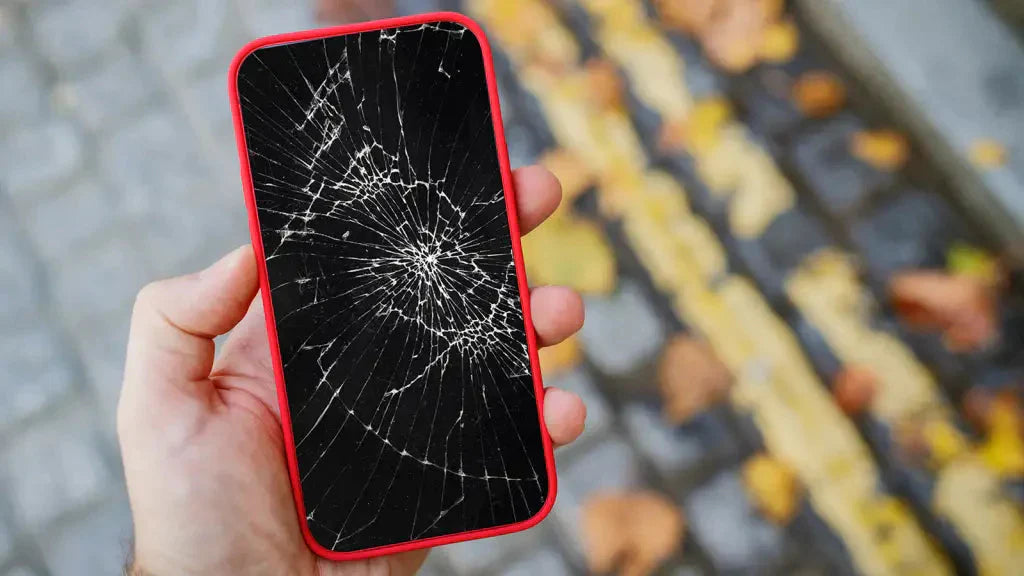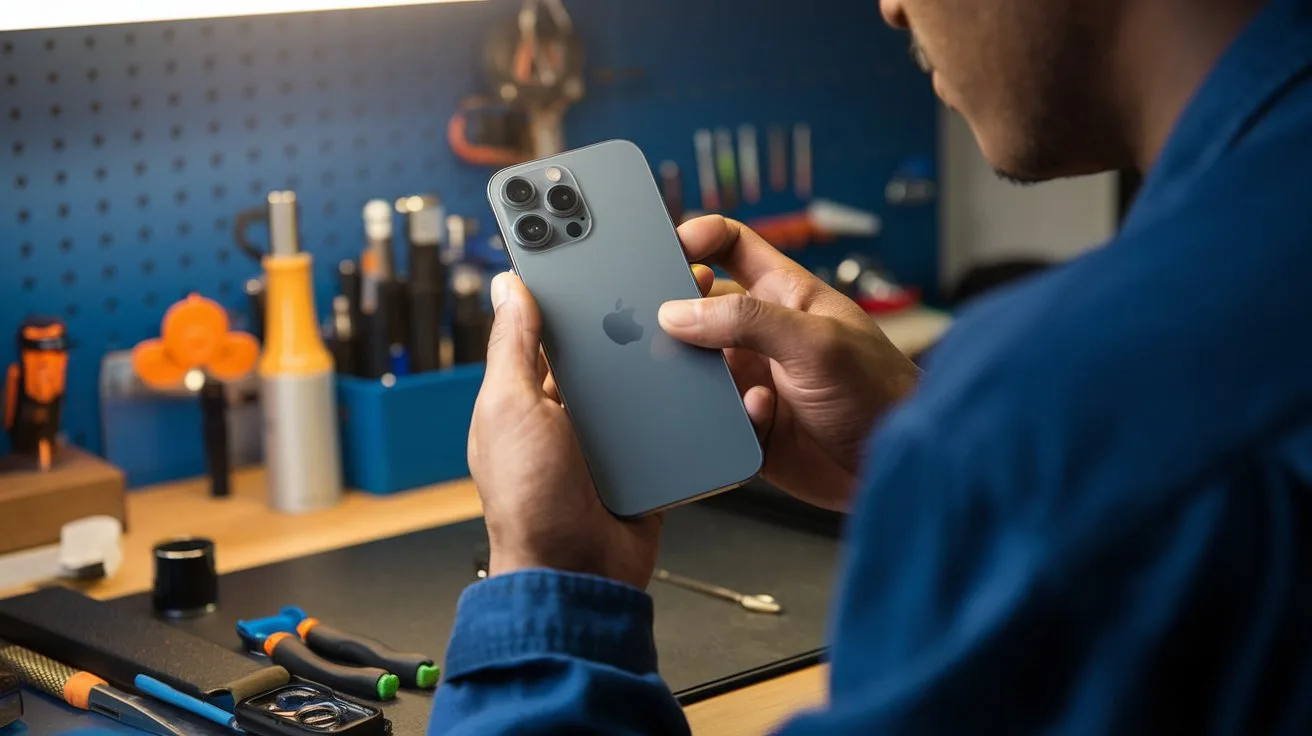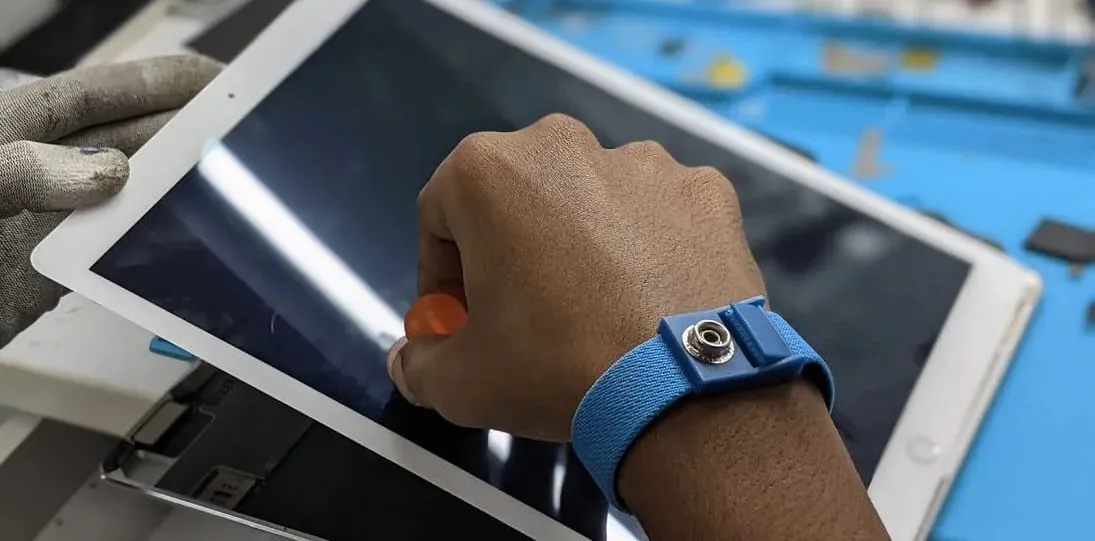When your iPhone screen cracks or malfunctions, you're faced with an important decision: should you opt for an OEM (Original Equipment Manufacturer) screen or choose an aftermarket alternative? This choice significantly impacts your repair experience, from initial cost to long-term performance and device value retention.
At iCircuit, we've installed thousands of iPhone screens over the years, giving us extensive experience with both OEM and aftermarket options. We've seen firsthand how the choice of screen affects everything from touch sensitivity and color accuracy to durability and customer satisfaction. This comprehensive guide will help you understand the critical differences and make an informed decision that best suits your needs and budget.
📱 Understanding iPhone Screen Technology
Modern iPhone Display Components
Today's iPhone screens are complex assemblies combining multiple technologies for optimal user experience.
Key Components of an iPhone Screen Assembly
Modern iPhone screens are sophisticated assemblies that include several critical components:
- OLED/LCD Panel: The actual display technology that produces images and colors
- Touch Digitizer: Capacitive layer that detects finger touches and gestures
- 3D Touch/Haptic Engine: Pressure-sensitive technology (iPhone 6s-XS models)
- Front Camera Assembly: Integrated selfie camera and sensors
- Ambient Light Sensor: Automatically adjusts screen brightness
- Proximity Sensor: Detects when phone is held to ear during calls
- Speaker Grille: Earpiece for phone calls
- Home Button (older models): Physical button with Touch ID integration
iPhone Screen Evolution
Apple has continuously advanced iPhone display technology:
- iPhone 4-6s: LCD Retina displays with excellent color accuracy
- iPhone 6s-8: Addition of 3D Touch pressure sensitivity
- iPhone X and newer: OLED Super Retina displays with True Tone
- iPhone 11-13: Liquid Retina LCD (standard) and OLED (Pro models)
- iPhone 14 and newer: ProMotion 120Hz displays on Pro models
What Makes iPhone Screens Special
- Color accuracy: Wide P3 color gamut for vibrant, true-to-life colors
- True Tone technology: Automatically adjusts white balance based on ambient lighting
- High pixel density: Retina and Super Retina resolutions for crisp text and images
- Oleophobic coating: Fingerprint-resistant coating for easier cleaning
- Seamless integration: Perfect compatibility with iOS and hardware features
⚖️ OEM vs. Aftermarket: The Complete Comparison
Understanding the fundamental differences between OEM and aftermarket screens is crucial for making an informed repair decision. Each option offers distinct advantages and trade-offs.
OEM (Original Equipment Manufacturer) Screens
- Definition: Screens manufactured by the same suppliers Apple uses for new iPhones
- Source: Genuine Apple parts from authorized distributors or refurbished devices
- Quality standard: Meets Apple's exact specifications and quality requirements
- Compatibility: 100% compatible with all iPhone features and iOS updates
- Warranty implications: Maintains device warranty status when properly installed
- Performance: Identical to factory-installed screens in every aspect
Aftermarket Screens - Types and Categories
Aftermarket screens come in several quality tiers:
High-Quality Aftermarket (Premium)
- Manufacturing: Made by reputable third-party manufacturers
- Quality control: Rigorous testing and quality standards
- Performance: Near-OEM performance with minor compromises
- Cost: 60-80% of OEM screen cost
- Features: Most iPhone features work correctly
Standard Aftermarket (Mid-Range)
- Manufacturing: Decent quality third-party production
- Performance: Acceptable performance with noticeable differences
- Cost: 40-60% of OEM screen cost
- Compromises: Color accuracy, touch sensitivity, or durability issues
Economy Aftermarket (Budget)
- Manufacturing: Basic quality, minimal testing
- Performance: Functional but with significant compromises
- Cost: 20-40% of OEM screen cost
- Issues: Poor color reproduction, reduced sensitivity, shorter lifespan
Feature Compatibility Comparison
- 3D Touch/Haptic Touch: OEM (100%), Premium Aftermarket (85-95%), Standard (70-80%), Economy (40-60%)
- True Tone: OEM (Perfect), Premium (Good), Standard (Limited), Economy (None)
- Color accuracy: OEM (Perfect), Premium (Very Good), Standard (Good), Economy (Fair)
- Touch sensitivity: OEM (Perfect), Premium (Excellent), Standard (Good), Economy (Acceptable)
- Durability: OEM (Excellent), Premium (Very Good), Standard (Good), Economy (Fair)
🔍 Quality Differences That Matter
The quality differences between OEM and aftermarket screens affect your daily iPhone experience in measurable ways. Understanding these differences helps you set realistic expectations and make the right choice.
Display Quality and Visual Experience
- Color accuracy: OEM screens display colors exactly as Apple intended, while aftermarket screens may have color shifts, especially in blues and whites
- Brightness levels: OEM screens achieve maximum brightness ratings, aftermarket screens often 10-20% dimmer
- Contrast ratio: OLED aftermarket screens may not achieve the deep blacks and high contrast of OEM panels
- Viewing angles: Color and brightness consistency when viewing from different angles
- Pixel quality: Dead pixels, light bleeding, or uneven backlighting more common in lower-quality aftermarket screens
Touch Performance and Responsiveness
- Touch sensitivity: Aftermarket screens may require slightly more pressure for touch registration
- Multi-touch accuracy: Precision when using multiple fingers simultaneously
- Edge detection: Accuracy of touches near screen edges, important for iOS gestures
- Palm rejection: Ability to ignore accidental touches when holding the phone
- Stylus compatibility: Precision when using Apple Pencil or similar styluses
Advanced Feature Implementation
- 3D Touch precision: Accurate pressure detection for peek, pop, and quick actions
- True Tone functionality: Automatic white balance adjustment based on ambient lighting
- Auto-brightness accuracy: Proper response to lighting conditions
- Night Shift integration: Smooth color temperature adjustments for eye comfort
- ProMotion (newer models): 120Hz refresh rate for smooth scrolling and responsive touch
Durability and Longevity Factors
- Screen longevity: OEM screens typically last the lifetime of the device, while lower-quality aftermarket screens may degrade within 1-2 years
- Touch degradation: Aftermarket screens more prone to developing dead spots or reduced sensitivity over time
- Color stability: Color accuracy may shift over time with aftermarket displays
- Physical durability: Resistance to impacts and daily wear
- Oleophobic coating quality: Fingerprint resistance and ease of cleaning
Integration with iOS Features
- Face ID accuracy: Proper integration with facial recognition sensors
- Camera app functionality: Seamless integration with front-facing camera features
- Accessibility features: Proper support for VoiceOver, magnification, and other accessibility tools
- Screen recording quality: Accurate capture of on-screen content
- App compatibility: Some apps may detect non-OEM screens and limit functionality
💰 Cost Analysis: Understanding the Investment
The price difference between OEM and aftermarket screens is significant, but understanding the total cost of ownership helps make a more informed decision.
Upfront Cost Comparison (Bangalore Market Prices)
- iPhone 14 Pro OEM Screen: ₹25,000 - ₹30,000 including installation
- iPhone 14 Pro Premium Aftermarket: ₹15,000 - ₹20,000 including installation
- iPhone 14 Pro Standard Aftermarket: ₹8,000 - ₹12,000 including installation
- iPhone 13 OEM Screen: ₹20,000 - ₹25,000 including installation
- iPhone 13 Premium Aftermarket: ₹12,000 - ₹16,000 including installation
- iPhone 12 OEM Screen: ₹18,000 - ₹22,000 including installation
- iPhone 11 OEM Screen: ₹15,000 - ₹18,000 including installation
Total Cost of Ownership Factors
- Initial repair cost: Immediate expense for screen replacement
- Potential re-repair costs: Lower-quality aftermarket screens may need replacement sooner
- Device resale value: OEM screens maintain higher resale value
- Warranty considerations: Impact on existing device warranties
- Performance satisfaction: Value of maintaining optimal device performance
When OEM Screens Make Financial Sense
- New or high-value devices: iPhone 12 and newer models with high resale value
- Primary daily driver: Main phone that needs optimal performance
- Professional use: Business phones requiring reliability and quality
- Long-term ownership: Planning to keep device for 2+ years
- Warranty preservation: Devices still under Apple warranty or AppleCare
When Aftermarket Screens May Be Appropriate
- Older devices: iPhone X and earlier models with lower resale value
- Secondary phones: Backup devices with lighter usage
- Budget constraints: When OEM repair cost approaches device replacement cost
- Short-term use: Planning to upgrade within 6-12 months
- Experimental repairs: Learning experiences or temporary fixes
Hidden Costs to Consider
- Reduced battery life: Some aftermarket screens consume more power
- App compatibility issues: Potential problems with banking or security apps
- Insurance implications: Some policies may not cover devices with aftermarket parts
- Future repair complications: Aftermarket screens may complicate future repairs
- Calibration requirements: Additional costs for proper color and touch calibration
🎯 Making the Right Choice for Your Situation
Choosing between OEM and aftermarket screens isn't just about cost—it's about matching the solution to your specific needs, usage patterns, and expectations.
Decision Framework Questions
- How old is your iPhone? Newer models (iPhone 12+) generally justify OEM screens
- How much is your iPhone worth? If repair cost exceeds 50% of device value, consider alternatives
- How long will you keep it? Long-term ownership favors OEM quality
- What's your usage pattern? Heavy daily use benefits from OEM reliability
- Do you plan to sell it? OEM screens maintain better resale value
- Are you tech-sensitive? If you notice display quality differences, choose OEM
Professional Use Cases - Choose OEM
- Business phones: Reliability and professional appearance matter
- Content creation: Color accuracy critical for photography/videography
- Design work: True color representation essential
- Medical/security applications: Absolute reliability required
- High-value devices: iPhone 13 Pro/Pro Max and newer models
Acceptable Aftermarket Use Cases
- Older devices: iPhone X, 8, 7 and earlier models
- Backup phones: Secondary devices with light usage
- Children's phones: Devices prone to repeated damage
- Temporary repairs: Quick fixes before device upgrade
- Budget constraints: When OEM repair isn't financially viable
Quality Indicators for Aftermarket Screens
If choosing aftermarket, look for these quality indicators:
- Brand reputation: Established manufacturers with positive reviews
- Warranty coverage: At least 6-month warranty on parts and labor
- Feature compatibility: Support for 3D Touch, True Tone, and other iPhone features
- Professional installation: Certified technicians with proper tools
- Return policy: Option to return if performance is unsatisfactory
Red Flags to Avoid
- Extremely low prices: If it seems too good to be true, it probably is
- No warranty: Avoid screens without any warranty coverage
- Unknown brands: Generic or unbranded screens often have quality issues
- Installation in non-professional settings: Proper clean room environment important
- Pressure to decide quickly: Quality repair shops explain options without rushing
Expert Recommendations by iPhone Model
- iPhone 14/15 series: OEM strongly recommended for optimal experience
- iPhone 13 series: OEM preferred, premium aftermarket acceptable
- iPhone 12 series: OEM recommended, quality aftermarket viable option
- iPhone 11 series: Premium aftermarket often sufficient
- iPhone X/XS series: Quality aftermarket usually adequate
- iPhone 8 and earlier: Aftermarket often most cost-effective choice
The choice between OEM and aftermarket iPhone screens ultimately depends on your specific situation, budget, and priorities. While OEM screens offer the best possible experience, quality aftermarket options can provide satisfactory performance at a lower cost for the right circumstances.
Remember that screen quality affects your daily iPhone experience for years to come. When in doubt, consult with certified repair professionals who can assess your specific device and usage requirements. At iCircuit, we help customers make informed decisions by explaining the trade-offs and showing sample screens when possible, ensuring you get the repair solution that best matches your needs and expectations.
Need iPhone Screen Replacement?
Get expert advice on the best screen option for your iPhone. We offer both OEM and premium aftermarket screens with professional installation and warranty.
Expert installation with 1-year warranty on all screen repairs
iPhone Screen Expert
Certified technician with 8+ years experience in iPhone display repairs
Published: June 08, 2025
Quick Navigation
Expert Screen Repair
Professional iPhone screen replacement with OEM and premium aftermarket options
Get Quote


